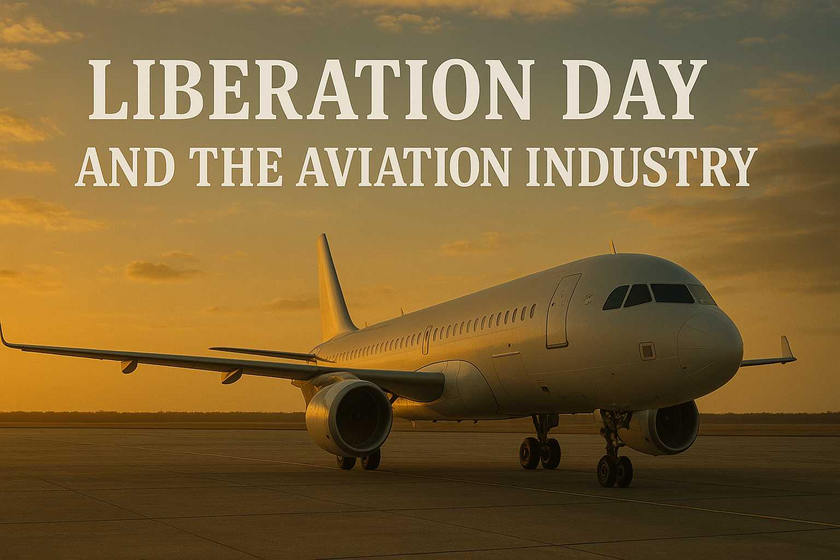In continuation of our discussion on Central Bank Digital Currency (CBDC) This time we are looking at a CBDC that has been implemented and get a sense of its success or failure within that economy.
Readers of this newsletter would undoubtedly come to the conclusion that there are two opposing camps on CBDC. One that supports CBDC – albeit the smaller camp – and a much larger camp that does not support CBDC. The arguments against CBDC seem to be much stronger than those for CBDC.
On Aviation™ Note: Central Bank Digital Currency are never to be confused with Cryptocurrency. The main difference is that cryptocurrencies are decentralized while the very name and nature of CBDC is a centralized currency.
In previous articles on CBDC we noted that there are some countries that I’ve already implemented the currency. At this time we have some data and information from a full implementation of CBDC within an economy and we have the outcome of that. The truth is that the outcome is not what the authorities expected. In fact, even the regular citizens had a somewhat different expectation as to what would’ve happened.
On Aviation™ Note: It is very important for us to remember that for most economies around the world money and currency have been digital. Meaning, much of the transactions we do in the western world are done on credit cards through electronic means. Creating a CBDC within an economy only further those in a way that they are controlled primarily by the central bank rather than individual banks within specific regions of a state.
Once more, we know that there are those who would ask: Why should we even care? What does this have to do with the aviation industry? Once you accept that we live in a free market economy and that our transactions should be unhampered. Then you realize that the concerns of market interference that have been raised regarding CBDCs might be something we want to take a look into. Whether you are an individual or operate a business in the aviation space, the freedom to transact and the ease of access to money are very important. Also, there are other underlying concerns that we might want to take a look at that could affect the aviation industry.
In this week’s On Aviation™ full article, we share some very important insights Into the implementation of CBDC within an economy, sharing some insights with the reader as to the outcome of that implementation. Hint: It was not good.
For additional readings on central bank digital currency and the aviation industry, please see also: ‘Central Bank Digital Currencies: Net Positive For Aviation?’, ‘Central Bank Digital Currencies: The Argument for.’, ‘Central Bank Digital Currency: Nothing to Fear?’, ‘Aviation: More on Central Bank Digital Currency.’, ‘Aviation: U.S. Fed Launched FedNow! Is This Central Bank Digital Currency?’, and ‘CBDC: What’s All The fuss?’
It is no coincidence that Nigeria, with a population of over two hundred million, became the first serious global testing ground for central bank digital currencies (CBDC) implementation. Not only is it the wealthiest country on the continent where the globalists are making plans, but Nigeria also possesses significant hydrocarbon and metals reserves and talented citizens. For these reasons, it can serve as a relatively good example for the rest of the poorest continents.
Geopolitical considerations are not insignificant. The Davos globalists, who have been present in Nigeria for some time, feel that if they do not take care of Nigeria, the Russians, present there since the Soviet era, will do it. Political interests in Nigeria are also being sought after by the Chinese, who have been building railways, roads, airports, and mining companies in Nigeria while simultaneously cultivating good relationships with tribal and political leaders.
A Calendar
Here is the timeline of the establishment of eNaira, the Nigerian CBDC. Although the attempt to digitize the Nigerian currency ended in failure, it carries a lesson for the rest of the world.
On October 25, 2022, one year after the national referendum on the establishment of CBDC in Nigeria, in which 99.5 percent of the citizens voted against digitalizing the currency, the then president of the country, Muhammadu Buhari from the Fulani tribe, issued a decree that despite the opposition of the majority of the nation, the financial revolution would still take place.
In December 2022, the government in Abuja launched a total attack on cash. The situation resembled events from 2016 in India when the government demonetized the highest denomination banknotes. The governor of the Central Bank of Nigeria (CBN) announced that by the end of January 2023 (later extended to February 10), Nigeria would fully transition from physical cash (naira) to eNaira, the central bank’s digital currency. People were required to transfer their cash holdings to the CBN, which would service them under the new monetary regime. The executive order was carried out by the then governor of the CBN, Godwin Emefiele from the Ibo tribe, a general and the only Christian in the country’s Islamic ruling elite. Well-informed sources claim that the guidelines, both in know-how and digitalization supervision, were provided by circles close to the International Monetary Fund (IMF), the World Economic Forum (WEF), and even the Bureau of Industry and Security.
When February 10, 2023, arrived and about 80 percent of the $7.2 billion, previously in private hands, ended up in digital accounts as CBDC, the poorer segment of the population (over half of the people) still did not have bank accounts. Despite assurances from the CBN that physical cash would not be eliminated until CBDC was fully operational, half of the nation was left with old, worthless banknotes! Commuters to and from the capital were left without cash to pay for their return transportation. Many small businesses, a significant part of the economy that relies on cash payments, closed because their customers had no money to pay.
It is easy to understand why violent riots erupted in the country on February 16, 2023, resulting in casualties. Deprived of their entire wealth, desperate and hungry people took to the streets, demanding the reinstatement of the validity of the old paper currency. Rumors circulated that the Buhari government had issued a new paper currency, “new naira,” to be used temporarily.
By the end of January 2023, transactions using eNaira operated smoothly but were limited to representatives of the middle class—totaling about thirty-five to forty million people in Nigeria. The vast majority of Nigerians who used cash in their daily lives ran around fruitlessly searching to exchange their old money for anything they could eat. The rumor that Buhari’s government issued new currency was confirmed in the last days of January 2023.
The problem was that the new cash was nowhere to be found. Even today, when the central bank has withdrawn from the experiment, the supply of the new cash did not even reach 10 percent of the entire Nigerian currency supply. There is no new money anywhere; even if it were, there is no possibility of mass exchanging the old, invalidated naira for the new. Despite the events of February 16, the government acknowledged that the “newly issued currency is intended to meet the demands of the protesters and restore their purchasing power.”
Even the brightest Nigerians were unable to understand how the government planned to eliminate existing cash and issue new money just a few weeks before the general elections scheduled for February 24, 2023. Didn’t the government risk an obvious defeat amidst the chaos? Well, no! The new cash was the guarantee of electoral victory: it was intended to be distributed to the poor but significant majority, so they would know who to vote for democratically.
As predicted, the new president of Nigeria is a representative of the ruling party, the same one responsible for the chaos. It’s important to note that we’re talking about a country that was already struggling with a currency crisis, soaring inflation, and fuel shortages (despite being Africa’s largest oil producer), where a severe lack of money and never-ending queues at ATMs have been prevalent for years. Even dollars were scarce despite black-market premiums.
End of the Experiment
The situation of uncertainty and danger persisted for three and a half months until the inauguration of the new president, Bola Ahmed Tinubu from the Yoruba tribe, a former civilian governor of Lagos state. On May 29, 2023, approximately 108 days after the actual cash elimination, President Tinubu restored the validity of the old currency, alongside with the new naira and eNaira.
What led Tinubu to make such a gesture? Was he forced to do so by overseers of the experiment from the IMF, the Fed, or the WEF? If so, why did it take them three and a half months to condemn a hundred million people to starvation?
Political observers in Abuja believe that no one intervened. President Bola Tinubu put an end to the experiment and stuck to his position. Once he invalidated the CBDC, he ordered an investigation into the CBN, resulting in the unprecedented detention of the former CBN governor, Godwin Emefiele, on June 10, 2023. In late July the court released him from custody, but the security service rearrested him and is holding him in custody. The investigation is ongoing. Influential protectors from the IMF, the Fed, and even the White House, which singled out Nigeria as the global debutant of currency digitalization, remain silent.
From the perspective of the start of the monetary experiment in Nigeria, it appears that the government in Abuja had neither the appetite nor a clear plan for this digitalization. The advisors from the World Economic Forum, the IMF, or perhaps even the Bureau of Industry and Security lacked a plan too, despite their strong adherence to digitalization strategies. Why didn’t these overseers react and halt the digitalization? Was there another purpose for it? Depriving one hundred million people of their means to live for three and a half months borders on an act of genocide.
Survival
Yet, a tragedy did not occur. How did poor Nigerians survive for three and a half months without money, reserves, or any help from the state? Nigerians, unlike most residents of the Group of Seven countries, don’t believe a word their government representatives say. Feeling deceived once again, when it became clear that neither the old nor the new naira worked, people took to the streets. Shots were fired, and a few people died.
In response to refusals to accept their old cash, invalidated at the end of January, people without bank accounts, legal cash, or any savings resorted to traditional methods: barter and trade credit. Matchstick holders exchanged them for yams with farmers. Soap producers traded for fuel, and small business owners extended longer credit terms to their contractors. Teachers and cleaners from local schools sought help, mainly food, from the families of their students.
Nigerians’ natural lack of faith in statism, something wealthy citizens of Germany or Canada might consider imprudent, prevented a similar outcome as that of the Canadian Freedom Convoy. It is, after all, due to their country’s monetary policy that German retirees are experiencing difficulties.
According to Nigerians, a weak, small state might not help them, but at least the value-added tax in Nigeria is at most 5 percent and tax collection does not exceed 25 percent. Healthcare may be deficient, but people have more trust in their shamans than the bored and Big Pharma–corrupted doctors. Speeding fines are rare due to a lack of police officers, but there is no labor inspection and no one forces anyone to take an experimental vaccine.
Tribal groups, rural authorities, and neighbors provided assistance. Families, which in African life are the ultimate support, helped. Self-help was the basis of survival for the Nigerians deprived of any assistance. I’m writing this because soon much more statist nations will undergo similar currency digitalization.
Epilogue
The situation in Lagos, Abuja, and Port Harcourt is returning to normal, and eNaira is one of several legal currencies. After the US dollar exchange rate was freed, black-market prices fell to the official level. The Nigerian Exchange Group, expressed in US dollars, has risen by 37 percent so far in 2023. Naira inflation is declining faster than inflation in the US. Since Emefiele’s arrest, the specter of a CBDC monopoly has disappeared. Those who find electronic money more convenient use it. When that convenience is lost, they will switch to cash or its digital alternative. People now know that there wouldn’t have been such chaos if the currency digitalization was voluntary and not accompanied by cash delegalization.
Will Nigeria’s case help other global central bankers and citizens arrive at a similar conclusion? Probably not, so we await the next economic disaster.
_____________________
Author:
Jan M. Fijor is a Polish journalist and founder of the Fijorr Publishing, the largest Polish publishing house dedicated to the Austrian School of Economics, which has published nearly 200 major titles.
_____________________
This article was published in the Mises Wire on September 01, 2023, with the title “How a CBDC Created Chaos and Poverty in Nigeria”. The views expressed are the author’s and do not constitute an endorsement by or necessarily represent the views of On Aviation™ or its affiliates.
Thank you for reading this week's On Aviation™ full article. What are your concerns about Central Bank Digital Currency? Please share your thoughts in the comments below. Remember to check out our On Aviation™ Podcast and continue the conversation on our Twitter and Instagram.
Orlando - On Aviation™


















